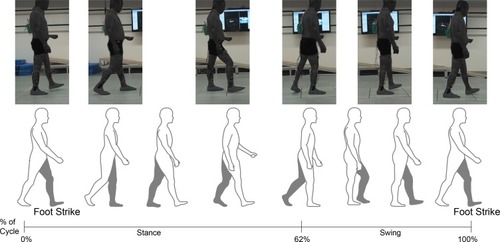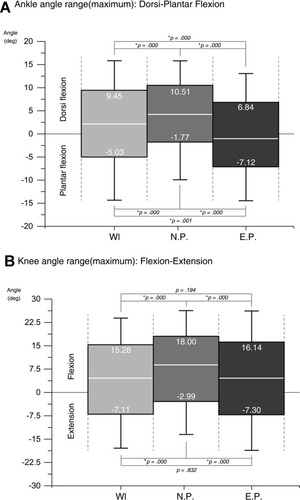Figures & data
Table 1 Subject Characteristics
Figure 1 Ankle–foot orthosis (AFO) types: (A) elastic band-type AFO, (B) hard plastic material-type AFO.

Figure 2 The gait experiment of the hemiplegic patient, one gait cycle = foot strike–strike (affected side).

Figure 4 A comparison of ankle and knee joint kinematics and three conditions (Wl, NP, and EP). (A) Ankle angle range in dorsiflexion and plantar flexion; and (B) knee angle range in flexion–extension.
Abbreviations: AFO, ankle–foot orthosis; WI, wearing nothing; NP, wearing elastic band-type AFO; EP, wearing hard plastic-type AFO.

Table 2 Correlation Between Four Dependent Variables by Pearson’s Correlation Coefficient

